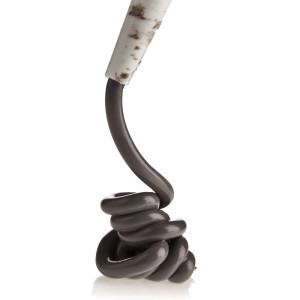Gotta Stay Flexible!

Large buildings and parking garages have expansion joints included in their original design to accommodate natural thermal movement (expansion and contraction), as well as to separate portions of the buildings with varying masses, so that expected swaying, such as with the wind, will not result in damage to the structure.
 These joints effectively divide the structure/building into separate, smaller pieces and often must be sealed to prevent rain from entering the building. The joints cannot be filled with a solid, rigid material, so a flexible filler must be used that can stretch as far as is needed while remaining watertight.
These joints effectively divide the structure/building into separate, smaller pieces and often must be sealed to prevent rain from entering the building. The joints cannot be filled with a solid, rigid material, so a flexible filler must be used that can stretch as far as is needed while remaining watertight.
Expansion joint filling materials typically have a service life of about 5-10 years. Selecting the proper joint filler is necessary to obtain suitable performance. Some considerations are:
1.) What type of traffic will it be subjected to? Pedestrian, automobile, heavy trucks, buses, snow plows,etc. 2.) Will the joint need a protective cover? 3.) Does the joint need to be watertight or fire-rated? 4.) How will the joint filler be incorporated into the adjacent waterproofing system? 5.) How much elongation and compression movement is expected? 6.)What Is the geometry of the joint itself and are there any turns or changes in direction?
Leaking or failed joints can result in damage to the structure, so the right material must be used to allow the structures to move independently, while remaining intact. Sometimes a simple caulk joint may be the proper choice, but more elaborate pre-formed materials are also available.
